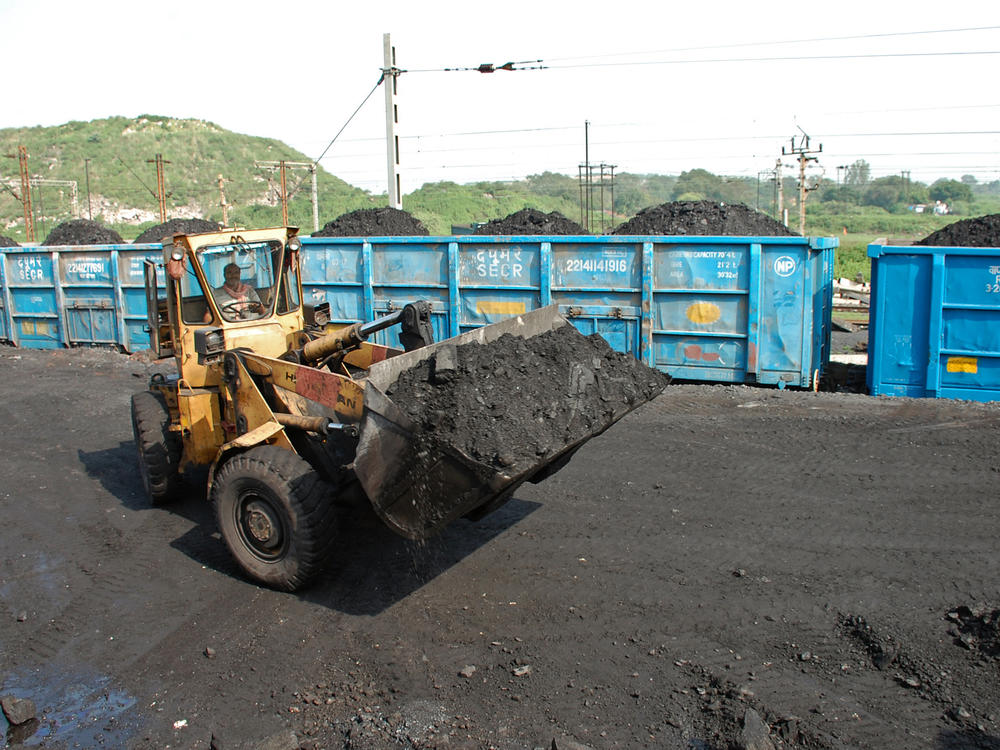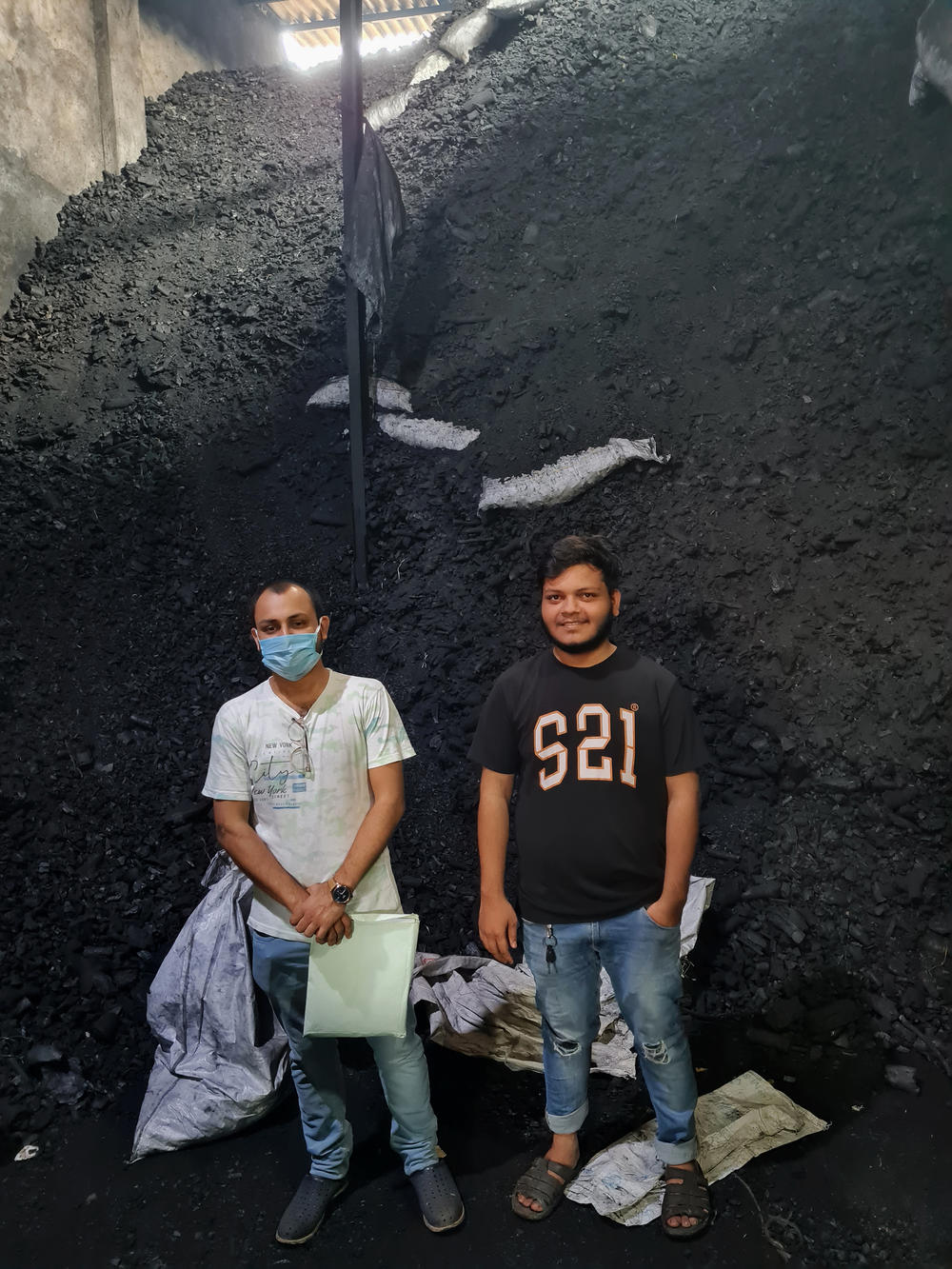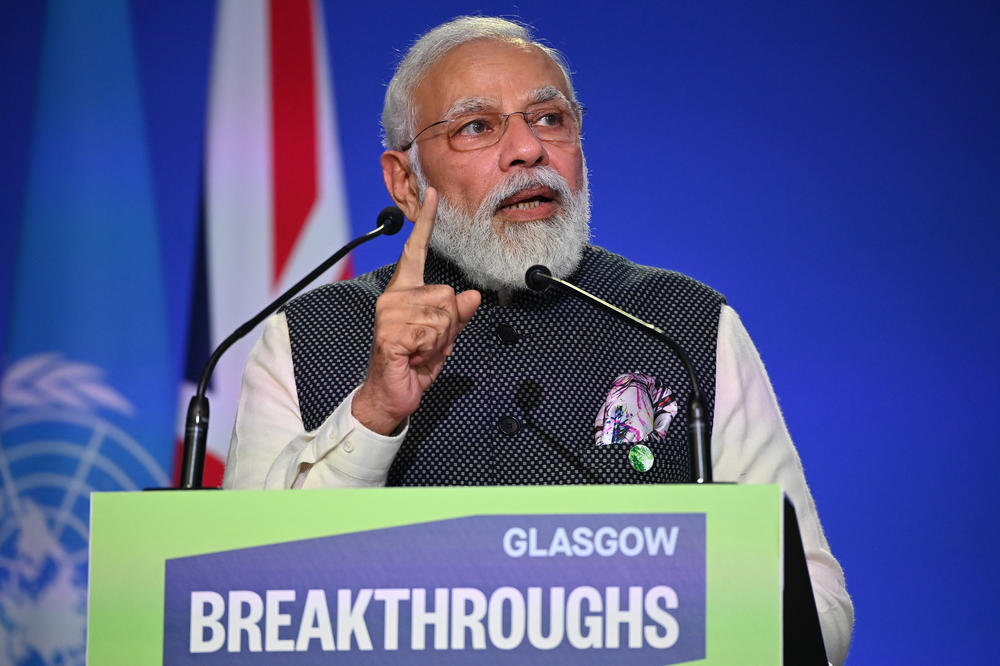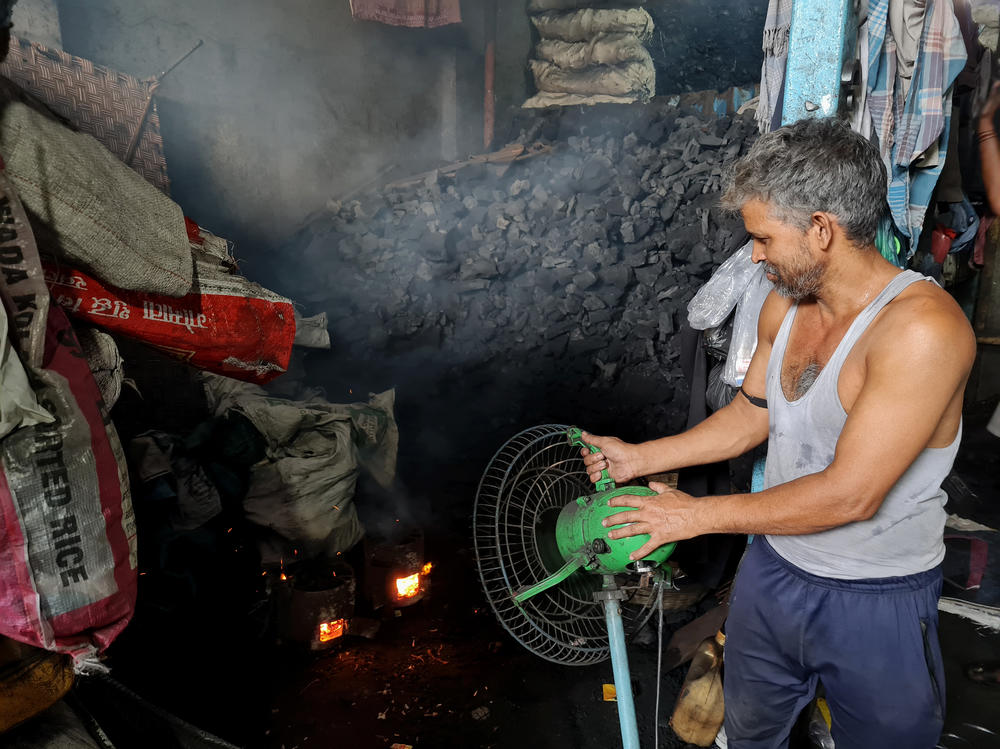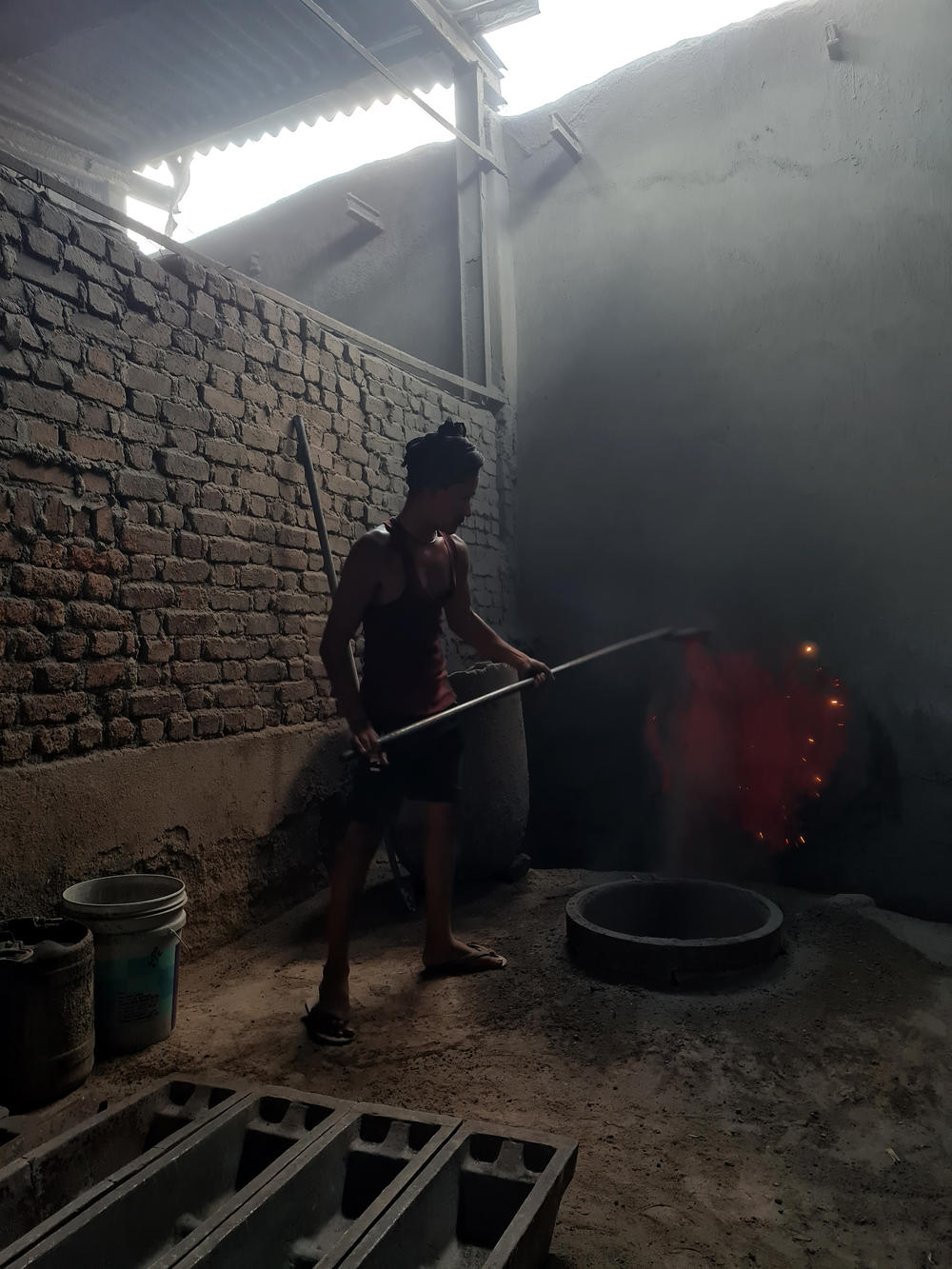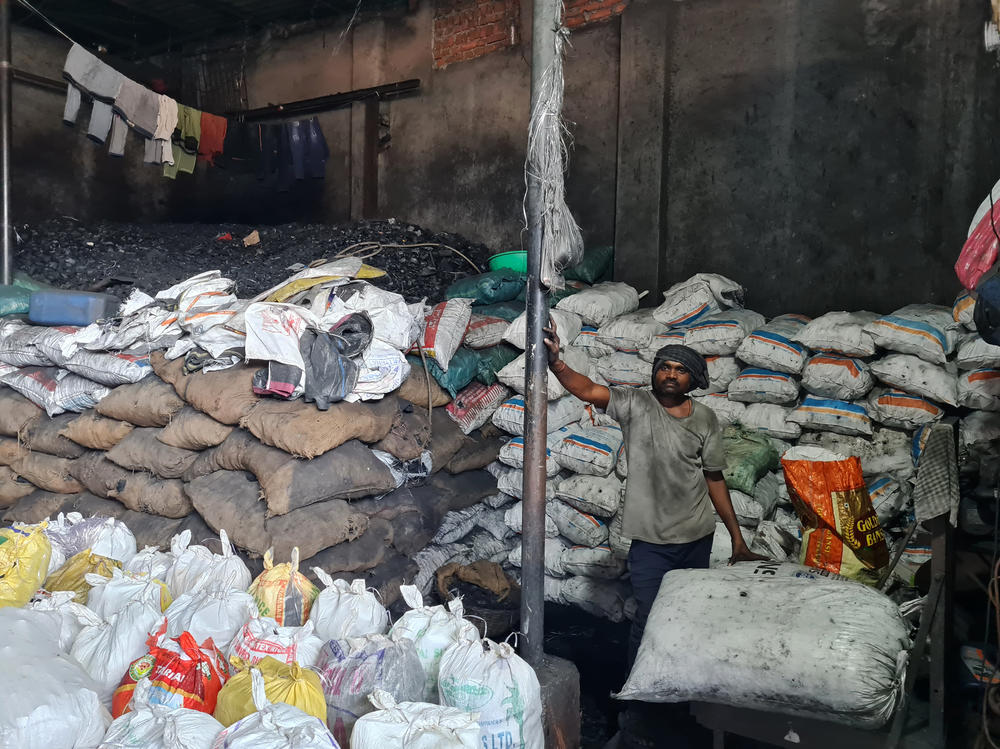Section Branding
Header Content
India pledges net-zero emissions by 2070 — but also wants to expand coal mining
Primary Content
MUMBAI — At a coal depot tucked away in an urban slum, Abdul Moeed Chaudhary surveys his workers. Wiry men wearing flip-flops shovel heaps of coal into mounds that reach the rafters several stories high. Clouds of black dust billow up. Nobody is wearing a mask.
Chaudhary, 30, is the third generation in his family to manage this wholesale coal depot. It's one small stop in a long coal supply chain that crisscrosses the Indian subcontinent. He buys from agents sourcing coal from mines mostly in the country's east, and sells to factories, metal workshops and hotel chains in India's megacity, Mumbai.
His clients use coal to fuel their furnaces. Coal also fuels India's power grid: 70% of the country's electricity comes from it.
But Chaudhury recently did something none of his ancestors in the business ever dreamed of: He went away to college and earned a master's degree in renewable energy.
"There are two things: One is to sustain your life, but at the same time, you have to make efforts to change, for the future," he tells NPR on a tour of his facility.
So Chaudhary, while still working in the family coal business, is also experimenting with cleaner fuel technology and moonlighting as a consultant in sustainable architecture.
The transition he's trying to negotiate for his family business, from coal to renewables, is the same one that India — the world's third-biggest carbon emitter — must now make. The country is trying to find a way to meet the insatiable energy demands of nearly 1.4 billion people while also taking steps to ensure that development can continue for generations to come.
Climate change is being driven by burning fossil fuels like coal, which release heat-trapping pollution into the atmosphere. Scientists say that to avoid the worst damage from global warming, countries must keep most fossil fuels in the ground, including 90% of coal reserves.
Already, climate disruptions are pounding India through intense rainfall, flooding and heatwaves, and researchers warn that parts of the country could become uninhabitable by late this century.
At COP26, Modi made India's first net-zero pledge
On Monday, Prime Minister Narendra Modi surprised delegates at the U.N. climate summit in Glasgow with bold new promises: By 2030, he vowed, half of India's energy would come from renewables. And by 2070, India would stop adding greenhouse gases to the atmosphere and achieve carbon neutrality.
It's the first time Modi has set a target date for net-zero emissions. And even though 2070 is two decades later than what the United States and Europe have pledged, and 10 years later than China, Indian energy economists and environmental groups have applauded him.
"India's new pledges are significantly more ambitious than the country's earlier climate commitments," Ulka Kelkar, a Bengaluru-based economist and climate change expert, writes in comments emailed to NPR by the World Resources Institute, where she directs its climate program. "These will take the India on a low-carbon development pathway and give strong signals to every sector of industry and society."
In comments also emailed to NPR, Arunabha Ghosh, CEO of the New Delhi-based Council on Energy, Environment and Water think tank, calls Modi's pledges in Glasgow "a bold statement for low-carbon development."
"This is real climate action," he writes.
Energy experts say Modi's promises are bold precisely because of how far India will have to go to fulfill them.
In an interview last month with NPR, Kelkar described India's energy landscape as one of "unmet needs." While energy demand in the U.S. has plateaued in recent years, it's skyrocketing in India, she says.
"We're trying to pull millions of people out of poverty, and with that will come the need for more energy for lighting, for cooking, for setting up small enterprises — and really developing, as we aspire to raise our income levels from a lower-middle income country," Kelkar says. "We're also a very urbanizing society, so there's a lot of energy demand for buildings, for transportation and for industry."
Per capita, India's energy needs and consumption are currently a fraction of those in the more advanced economies of the West. But they're growing fast — faster, by some estimates, than any other major economy in the world.
And that's why, despite Modi's pledges in Glasgow, his government isn't ready to swear off coal altogether. India needs all the energy sources it can get.
While the West turns away from coal, Modi wants to expand coal mining in India
India has little of its own oil or natural gas, so it must import those — which leaves the country vulnerable to price fluctuations on global markets. But India has large domestic reserves of coal, which Modi wants to exploit. It's part of his Aatmanirbhar Bharat ("self-reliant India") campaign to develop domestic resources and avoid having to spend foreign currency on imports.
Last year, the Indian prime minister presided over an event called "Unleashing Coal," launching an auction of 41 new tracts of land for coal mining. If mined to capacity, it would be enough to boost the nation's coal output by more than 30%.
"If India is the fourth-largest coal producer in the world, then why can't we become the largest exporter?" Modi asked in a speech at the event.
Some of the areas he offered up to coal mining allegedly include ancestral lands belonging to tribal populations, protected under India's constitution. Many fear they'll be displaced or see the destruction of forests with spiritual importance to them.
"They are the ones still living in the most poverty," says Dilip Chakma, director of the Indigenous Lawyers Association of India. "They have not reaped the benefits of these coal projects in their territories."
In the end, Modi's 2020 coal auction was a bit of a flop. The Indian government couldn't find enough private investors, in part because of the changing global outlook toward coal, says Vibhuti Garg, an energy economist and coal expert at the Institute for Energy Economics and Financial Analysis.
"In most of the financial institutions globally, and to some extent, even in India, there is growing recognition and increasing funding for green projects. So raising finance is becoming a big problem for coal in India," Garg says. "We are not seeing global investors putting money on these coal assets, which are likely to become stranded."
That's a consolation to environmentalists. But in the lead-up to COP26, Indian officials reportedly told the U.N. that coal would nevertheless remain a mainstay of its energy economy for decades to come, according to leaked documents seen by the BBC.
Climate change is messing with India's monsoons — and obstructing its access its coal
This fall, India's devotion to coal was tested when global coal prices spiked.
At his depot in Mumbai, Chaudhary shows NPR a certain type of coal that suddenly jumped in price from 18 rupees (about 24 cents) per kilogram to 28 rupees (38 cents) per kilogram — a more than 50% spike over just a few weeks in October. Locked into contracts to sell lower than the going rate, Chaudhary was losing money.
The same was true this fall for coal vendors across Asia. Experts place at least some of the blame on erratic weather caused by climate change. In India, annual monsoon rains typically taper out by September. But this year, they didn't.
"India witnessed an extended monsoon season, and coal deliveries faced a bottleneck because of poor road conditions. Production was also impacted, because of flooding of mines," Garg explains. "As a result, the power plants started running out of coal."
Those shortages coincided with increased demand, as India's economy was coming back online after pandemic-related lockdowns. Both things drove up prices. Unable to access domestic reserves fast enough, some thermal power plants had to shut down some power generating units to conserve fuel.
Power cuts are the norm in rural India. In early October, officials warned they could affect India's big cities too — complicating the country's economic recovery. They asked people to ration electricity.
Ultimately, major blackouts were averted and the lights stayed on in India's big cities last month. Some Indian power plants had to buy imported coal at higher prices to keep the power supply uninterrupted. But many did not.
"The government sprang into action and ensured that domestic production was ramped up, and that the dispatchability — more railway tracks or road transportation of coal — was happening," Garg explains.
But this situation will keep happening, Garg warns, as long as coal is India's main power source and climate change keeps messing with monsoon rains.
That's why India is investing heavily in solar, wind and hydro power.
Solar, wind and hydro power will help wean India off coal
India's Thar desert, in the northwestern state of Rajasthan, is home to what Indian officials call the world's biggest solar power plant. It covers about 14,000 acres. Robots reportedly clean dust and sand off 10 million solar panels there.
It's one of several huge plants that will be put to work fulfilling Modi's climate pledges. On Monday, he told COP26 delegates that India would aim to build 500 gigawatts of renewable energy by 2030. By comparison, economist Kelkar tells NPR that by the end of September, India had generated 150 gigawatts from renewables. So Modi's goal is to more than triple that by the end of this decade.
Garg, the other energy economist, thinks India can do it.
"India has been making tremendous progress, and has added more than 100 gigawatts of renewable energy in the last few years alone," she says. "The share of renewables [in electricity generation] had been about 2 to 3% in 2010. And now it's around 10%, and in some months, even higher."
She says that coal's 70% share of India's electricity generation has probably already peaked, and will drop dramatically as more solar, wind and hydro power plants come online.
But economists and energy experts say India and other lower-income countries need help from wealthy nations to speed that transition.
"Without foreign capital, on concessional terms, this transition will prove to be difficult," says economist Vaibhav Chaturvedi, a fellow at the Council on Energy, Environment and Water.
At the COP15 climate meeting in 2009, wealthy nations promised that by 2020, they would donate $100 billion a year to developing countries like India and Bangladesh, which are extremely vulnerable to climate change. But that pledge has not been met.
On Wednesday, Bangladesh's Prime Minister Sheikh Hasina called that "saddening and disappointing."
"This is an unfortunate dilemma, and for survival, we have been swayed to adopt measures on our own to face the devastating consequences of climate change," Hasina said in a speech on the sidelines of COP26.
India's huge coal industry will probably be around for a while
A bit of help to make a big transition is something Chaudhary, the coal vendor in Mumbai, says he could also use.
Part of his business involves selling charcoal in bulk. Like coal, it's a dirty fuel. So he's been experimenting with a cleaner version made from charred coconut shells. But it's not economically viable for him yet. The process is too expensive. Coal is cheaper.
Chaudhury says he heard the news about Modi's climate pledges at COP26, and he's heartened. With his master's degree in renewables, he believes they are the future.
"I think it's good from the point of view of the environment," he says.
At the same time, he doesn't think his family-run coal depot will go out of business anytime soon.
"Twenty years ago, when I was 10 years old, my father was saying coal will vanish and that we'll have to start another business," Chaudhary recalls. "But India's population is increasing, and energy demand is increasing.
"So for sure, it's better to use renewables," he says. "But we will still be around."
Copyright 2021 NPR. To see more, visit https://www.npr.org.
